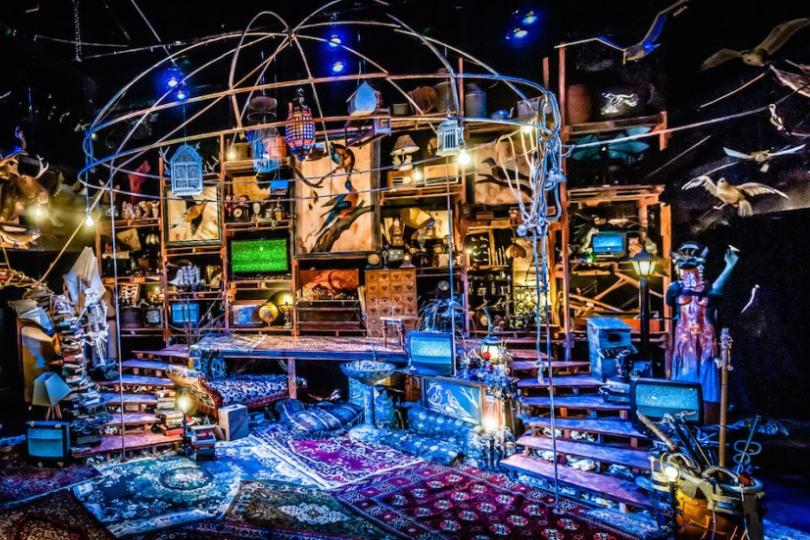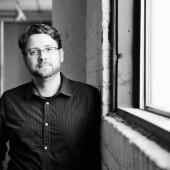Flipping the switch

Lighting is one of the more difficult production design aspects to effectively visualize imaginatively. Lighting is intangible, highly technical, and one of the last aspects of the design to be implemented and created.
At its basic application, Lighting is the physical design of seeing the set, leading to the understanding of the stage world. Although not a new concept, the idea of lights as objects of interaction and support is known—but rarely fully utilized.
The use of “practicals" is a great example of this. Practicals shape the formation of the space as defined by the scenic designer, supporting the period of the play and the environs either as interior or exterior. However, if we take this a step further, any light fixture can be an additional reinforcement of the stage world and how it is defined by both the script and the director.
In essence, the nature of the fixture is to function in design as both an aspect of, and an extension of, the stage world itself. The set becomes a character in the production, while the designed fixture, or practical, can give it a voice. By this definition, practicals become any lighting fixture used as a visually-present, interactive, atmospheric lighting object readily seen by a member of the audience.
In 2008, the first piece that I saw using a designed fixture (or “practical”) in modern dance was performed by the Zenon Dance Company at the Southern Theater. There was a bare bulb serving as the sole visible light source in a barren apartment room. As the piece progressed, the dancers came in contact with the bulb, batting it away, adding movement and shadow but also a sense of violence. The light represented the struggle between the two dancers, but also the fight between them was made manifest by a very physical attack against the only source of light in the space.
Seeing beyond the simple
However, what we commonly think of as practicals are primarily forms of accent lighting. In a realistic play we see them as chandlers, mounted sconces, and lamps that support the scenic environment. While this lighting is peripheral, there may be no reason for directors to view it as much of a tool – as props and scenic design would be.
On the other hand, in the absurdist play An Outopia for Pigeons (Swandive Theater, November 2013), the scenic designer, the directors, and I discussed from the very beginning the presence of sconces, lamps, and clear hanging bulbs to light the space – reinforcing the haphazard construction of the Outopia that the main character built to save her species. These light sources were the primary lights in the design, providing most of the visibility for the audience. The stage world itself had additional lighting support fixtures, but they were secondary.
Light, practical and onstage, became an extension of the set, brightening with a roar or a scream to a blinding level – forcing everyone but the main character offstage, plunging into darkness as a character broke down. The lights became characters in the stage world in addition to extending the character of the actors, set, sound, and script.
Useful and emotional
Through the use of lighting fixtures and instruments we define the character of the stage world – the principles that guide the staging and interpretation of the script for an audience. Each fixture has the potential to be present as an aspect of the design, not just a source of light, but an object of interaction and support. So these practicals become designed fixtures, capable of combining the complex relationship between stage world and their design utility.
In The Big Show (Theater Forever, March 2014), a show about death and the nature of spirit, stars played heavily as a theme in this story of a big time game show host, his life and rise to stardom, and his eventual demise onstage. Bare bulbs hung overhead and also were attached to poles that actors manipulated; they became characters of the stage world and the actors’ interactions with it. With this singular practical effect, these bulbs came to represent a multitude of environmental effects, such as: stars, candles, game show lights, buzzer effects, etc. A clear bulb practical supported the weight of the scenes, sounds and characterizations. One practical even represented a fatal heart attack: the actor’s spirit being drawn from his chest into one of the pole bulbs, with the bulb being “thrown” across the stage to form a new star in the sky.
We are very much a visual society, and even the most simple lighting effect or lighting presence adds a degree of visual spectacle that many in our society have come to expect from our various methods of entertainment. The physical presence of a light, while drawing a focus to a point where it is shined, additionally offers a direct practical sense which the characters themselves can use to control their world. At the very least characters can establish an interaction with an element, light, which can add significant weight to the eyes and to the attention of an audience member.




